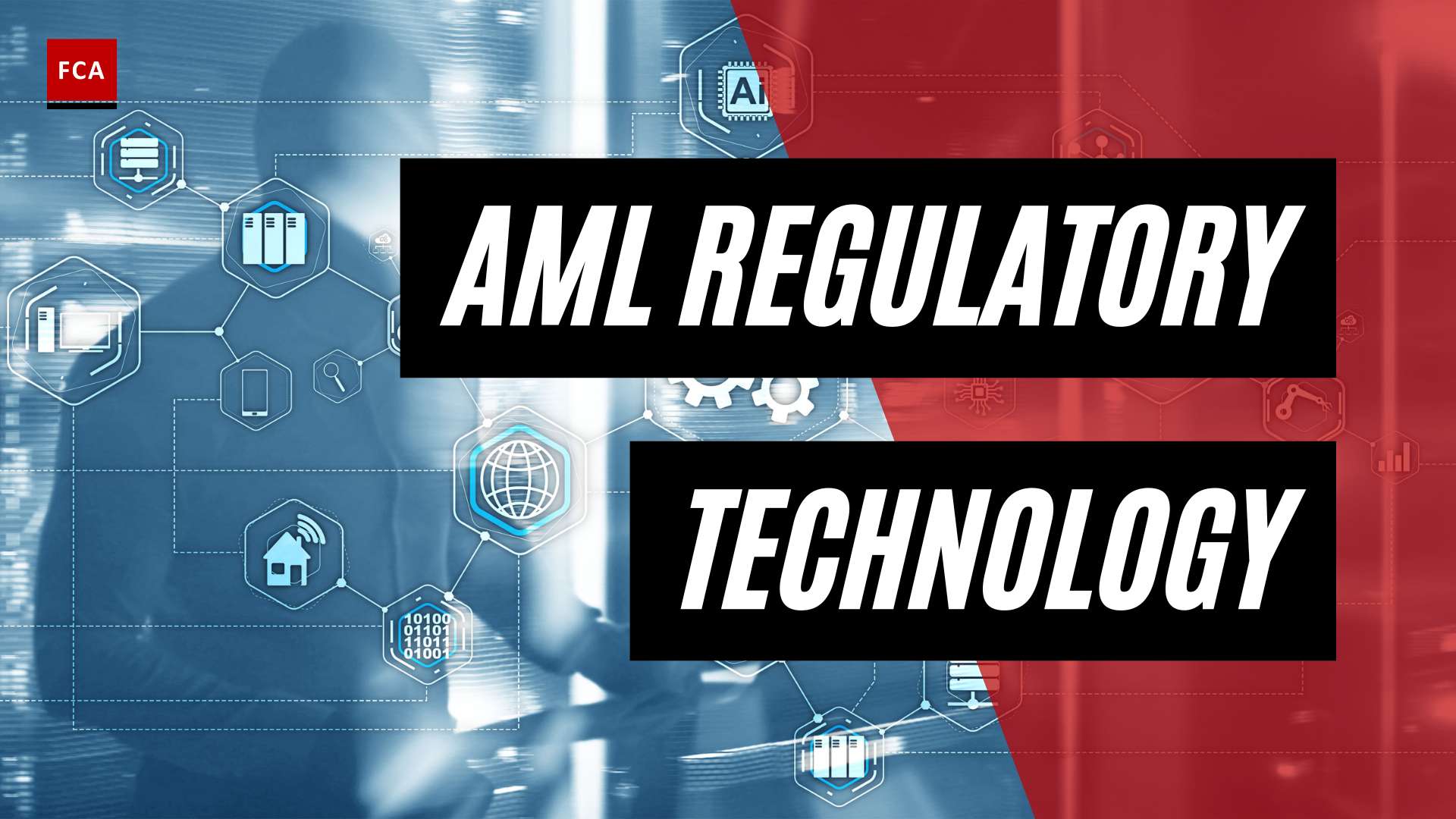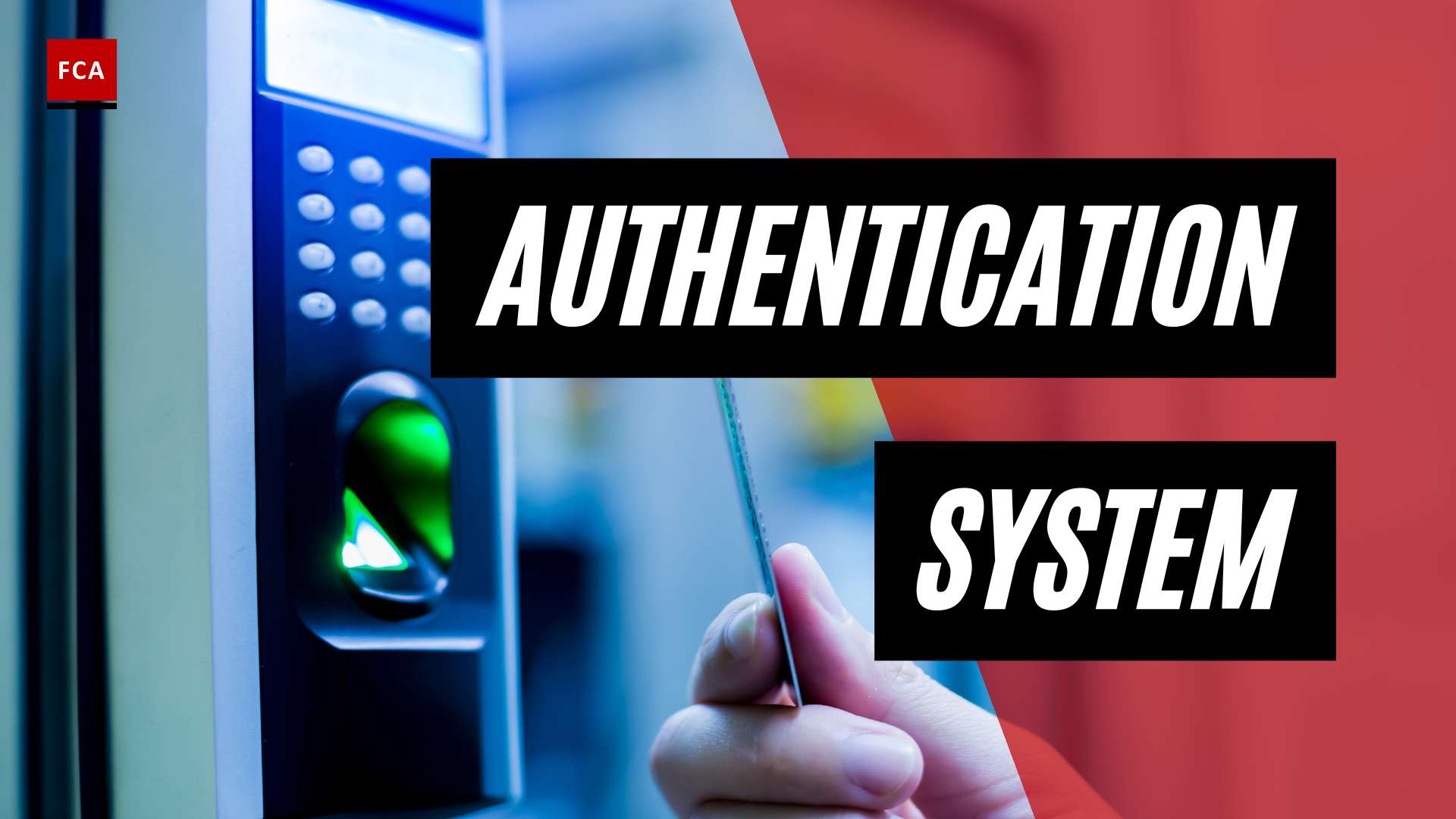AML in Banking: An Overview
In the banking industry, Anti-Money Laundering (AML) compliance plays a crucial role in combating illicit financial activities and safeguarding the integrity of the financial system. Banks are subject to stringent regulations and are required to adhere to AML guidelines to prevent money laundering, terrorist financing, and other financial crimes.
Importance of AML Compliance in Banking
AML compliance is of paramount importance for banks to maintain the trust and confidence of their customers, regulators, and the public. By implementing robust AML measures, banks can protect themselves from reputational damage, financial losses, and regulatory penalties. Maintaining a strong AML program helps banks:
- Identify and mitigate money laundering risks: AML compliance enables banks to identify and assess potential risks associated with money laundering and terrorist financing activities. By implementing effective AML controls, banks can reduce the likelihood of illicit funds entering or moving through their systems.
- Safeguard the financial system: Banks play a vital role in preventing the misuse of the financial system for illicit purposes. AML compliance ensures that banks actively contribute to the overall integrity and stability of the financial system by deterring and detecting financial crimes.
- Comply with regulatory requirements: Regulatory bodies, such as the Financial Crimes Enforcement Network (FinCEN) and the Office of the Comptroller of the Currency (OCC), impose strict AML regulations on banks. Compliance with these regulations is not only a legal requirement but also a means to demonstrate a commitment to ethical and responsible banking practices.
Regulatory Requirements for AML in Banking
Banks must adhere to a comprehensive framework of anti-money laundering regulations to ensure effective AML compliance. Regulatory requirements for AML in banking may vary across jurisdictions, but they generally cover the following areas:
- Customer due diligence (CDD): Banks are required to establish and verify the identity of their customers as part of the CDD process. This includes conducting customer risk assessments, performing enhanced due diligence for high-risk customers, and maintaining accurate customer records.
- Suspicious activity reporting: Banks must have mechanisms in place to detect and report suspicious transactions or activities that may indicate potential money laundering or other financial crimes. Timely reporting of suspicious activities is crucial for law enforcement agencies to investigate and take appropriate action.
- Transaction monitoring: Banks are required to implement robust transaction monitoring systems to identify and analyze potentially suspicious transactions. These systems utilize advanced technologies and algorithms to detect patterns and anomalies that may indicate illicit activity.
- AML training and awareness: Banks must provide regular training to employees on AML policies, procedures, and regulatory requirements. This ensures that staff members are equipped with the necessary knowledge and skills to identify and report suspicious activities.
By adhering to these regulatory requirements, banks can demonstrate their commitment to combating financial crime and contribute to a safer and more secure financial environment.
To effectively manage AML compliance, banks conduct regular AML audits, which we will explore in the next section.
AML Audits for Banks
To ensure compliance with anti-money laundering (AML) regulations for banks, financial institutions are required to conduct regular AML audits. These audits serve a crucial role in assessing the effectiveness and robustness of a bank’s AML program. In this section, we will explore the purpose and components of AML audits for banks.
Purpose of AML Audits
The primary purpose of conducting AML audits in banks is to assess the overall effectiveness of the bank’s AML program and to identify any potential vulnerabilities or weaknesses in their systems and controls. AML audits help banks evaluate their compliance with applicable laws, regulations, and industry best practices. By conducting these audits, banks can proactively detect and address any deficiencies in their AML policies, procedures, and systems.
The key objectives of an AML audit include:
- Evaluating the bank’s adherence to AML policies and procedures
- Ensuring compliance with regulatory requirements
- Identifying gaps or weaknesses in AML controls and systems
- Assessing the effectiveness of AML training programs
- Verifying the accuracy and completeness of AML documentation and records
- Assessing the bank’s risk assessment process and risk mitigation strategies
By conducting regular AML audits, banks demonstrate their commitment to combatting money laundering and terrorist financing activities. These audits provide a comprehensive review of the bank’s AML program, helping to protect the institution, its customers, and the integrity of the financial system.
Components of AML Audits
AML audits for banks typically consist of several key components that are essential for a comprehensive assessment of the bank’s AML program. These components may include:
-
Review of AML Policies and Procedures: This component involves a thorough examination of the bank’s AML policies, procedures, and internal controls. The auditor assesses the adequacy and effectiveness of these policies in achieving compliance with regulatory requirements and industry standards.
-
Testing of AML Controls and Systems: The auditor examines the bank’s AML controls and systems to ensure their effectiveness in detecting and preventing money laundering activities. This may involve testing transaction monitoring systems, customer due diligence processes, and suspicious activity reporting mechanisms.
-
Review of AML Training Programs: Training plays a crucial role in ensuring that bank employees are knowledgeable about AML regulations and their responsibilities in detecting and reporting suspicious activities. The auditor evaluates the bank’s AML training programs to assess their comprehensiveness and effectiveness.
-
Assessment of AML Documentation and Records: The auditor examines the bank’s AML documentation and records to verify their accuracy, completeness, and compliance with record-keeping requirements. This may include reviewing customer identification records, transaction records, and suspicious activity reports.
-
Evaluation of AML Risk Assessment: The auditor assesses the bank’s AML risk assessment process to determine the effectiveness of identifying and mitigating money laundering risks. This involves evaluating the bank’s risk assessment methodologies, risk ranking of customers, and mitigation strategies.
By examining these components during an AML audit, banks can gain valuable insights into the strengths and weaknesses of their AML program. This information can then be used to enhance their AML policies, procedures, and controls to ensure ongoing compliance with regulatory requirements and industry best practices.
Next, we will explore the benefits of AML audits for banks, including how they help in identifying vulnerabilities and weaknesses, as well as enhancing AML compliance and risk mitigation.
Conducting an Effective AML Audit
To ensure effective anti-money laundering (AML) compliance in banking, conducting thorough AML audits is crucial. These audits assess the bank’s AML policies, procedures, controls, and systems to ensure compliance with regulatory requirements and industry best practices. By evaluating these components, banks can identify vulnerabilities and weaknesses in their AML programs and take appropriate measures to enhance their AML compliance and risk mitigation efforts.
Assessing AML Policies and Procedures
During an AML audit, one important aspect is the assessment of AML policies and procedures. This involves reviewing the bank’s documented policies and procedures that outline the steps and protocols for detecting, preventing, and reporting potential money laundering activities.
The assessment includes evaluating whether the AML policies and procedures align with the anti-money laundering regulations for banks set forth by regulatory bodies such as the Financial Action Task Force (FATF) and the Office of the Comptroller of the Currency (OCC). It also involves determining if the policies and procedures cover key areas such as customer due diligence, transaction monitoring, and suspicious activity reporting.
To ensure effectiveness, AML policies and procedures should be regularly updated to reflect changes in regulations and emerging risks. Banks should also provide AML training to employees to ensure their understanding and adherence to these policies and procedures.
Evaluating AML Controls and Systems
Another critical aspect of an AML audit is evaluating the bank’s AML controls and systems. This involves assessing the measures in place to monitor, detect, and prevent potential money laundering activities.
The evaluation includes reviewing the bank’s transaction monitoring systems, AML screening tools, and other technology solutions used for AML compliance. It also involves assessing the effectiveness of these systems in identifying and reporting suspicious activities and transactions.
During the evaluation, auditors examine the adequacy of the bank’s risk assessment methodologies and controls, ensuring that they align with the bank’s risk appetite and regulatory requirements. They also assess the bank’s AML software and technology infrastructure to determine if they support efficient AML compliance processes.
By conducting a comprehensive evaluation of AML controls and systems, banks can identify any gaps or weaknesses that may exist and take appropriate actions to enhance their AML compliance efforts.
Regular AML audits are crucial for banks to maintain regulatory compliance and strengthen their AML programs. These audits help banks in identifying vulnerabilities and weaknesses in their AML policies, procedures, controls, and systems. By addressing these issues, banks can enhance their AML compliance and risk mitigation measures, ultimately safeguarding the integrity of the financial system and protecting themselves from being associated with illicit financial activities.
Next, let’s explore the benefits of AML audits for banks, including the identification of vulnerabilities and weaknesses, and the enhancement of AML compliance and risk mitigation efforts.
Benefits of AML Audits for Banks
Conducting regular AML audits is essential for banks to ensure compliance with anti-money laundering regulations and protect themselves from the risks associated with financial crime. AML audits offer numerous benefits to banks, including the identification of vulnerabilities and weaknesses within their AML programs, as well as the enhancement of AML compliance and risk mitigation.
Identifying Vulnerabilities and Weaknesses
AML audits play a crucial role in identifying vulnerabilities and weaknesses within a bank’s existing AML programs and controls. These audits thoroughly examine the bank’s policies, procedures, and systems to assess their effectiveness in detecting and preventing money laundering and other illicit financial activities. By conducting comprehensive audits, banks can uncover any gaps or deficiencies in their AML framework that may leave them exposed to potential risks.
Identifying these vulnerabilities allows banks to take proactive measures to strengthen their AML programs. Auditors provide recommendations for improvements, which banks can then implement to enhance their overall AML compliance posture. This proactive approach helps banks stay one step ahead of money launderers and maintain the integrity of the financial system.
Enhancing AML Compliance and Risk Mitigation
AML audits are an essential part of a bank’s risk management strategy. By identifying vulnerabilities and weaknesses, banks can enhance their AML compliance efforts and mitigate the risks associated with money laundering and terrorist financing activities. With the guidance provided by auditors, banks can implement necessary changes to their AML policies, procedures, and controls to ensure they align with regulatory requirements and industry best practices.
Enhanced AML compliance not only helps banks avoid regulatory penalties, reputational damage, and legal implications but also contributes to the overall stability and resilience of the banking sector. Sound management of AML risks is crucial for maintaining the integrity of the financial system and safeguarding against illicit financial activities that could have far-reaching consequences.
By conducting regular AML audits, banks demonstrate their commitment to combating financial crime and protecting the integrity of the financial system. These audits provide banks with valuable insights into the effectiveness of their AML programs, enabling them to continuously improve their systems and stay ahead of evolving money laundering techniques.
To further strengthen their AML processes, banks may also consider utilizing AML software solutions that offer advanced analytics, transaction monitoring, and screening tools. These technological solutions can complement the findings of AML audits and enhance a bank’s ability to detect and prevent suspicious activities.
In conclusion, AML audits are vital for banks as they help identify vulnerabilities, weaknesses, and gaps within their AML programs, enabling them to enhance their compliance efforts and mitigate risks associated with financial crime. By conducting regular audits and implementing necessary improvements, banks can stay ahead in the fight against money laundering and terrorist financing, maintaining the integrity and trust in the financial system.
AML Software for Banks
In the world of banking, where compliance with anti-money laundering regulations is paramount, the role of AML (Anti-Money Laundering) software becomes crucial. AML software solutions automate risk management processes for financial institutions, making it easier to monitor customer information and detect abnormal transactions. This technology is essential for combating financial crime and ensuring regulatory compliance (Unit21).
Role of AML Software in Compliance
AML software plays a vital role in helping banks meet their regulatory obligations and maintain effective AML compliance. By leveraging advanced algorithms and data analysis techniques, AML software enables banks to:
-
Monitor Customer Information: AML software allows banks to gather and analyze customer data, including transaction history, to identify potential money laundering or suspicious activities. This automated monitoring significantly enhances the efficiency and accuracy of the process.
-
Detect Abnormal Transactions: AML software uses sophisticated algorithms to flag transactions that deviate from normal patterns or display suspicious characteristics. This enables banks to identify potential money laundering activities and take appropriate action promptly.
-
Streamline Compliance Processes: With its automation capabilities, AML software reduces the manual effort required for compliance tasks. It helps banks streamline their processes, improve operational efficiency, and minimize the risk of errors in compliance tasks.
-
Adapt to Changing Regulations: AML regulations and guidelines are subject to frequent updates. AML software enables banks to stay up-to-date with these changes by providing the flexibility to adapt their compliance practices accordingly. This ensures that banks can meet evolving regulatory requirements effectively.
Key Features of AML Software
AML software solutions for banks encompass a range of features designed to address the specific needs of financial institutions. These features include, but are not limited to:
-
Customer Risk Profiling: AML software allows banks to categorize customers based on their risk levels. This helps prioritize due diligence efforts and allocate resources effectively by focusing more attention on higher-risk customers.
-
Transaction Monitoring: AML software enables banks to monitor customer transactions in real-time or on a periodic basis. By analyzing transactional data, it can identify suspicious activities, such as large cash deposits or frequent transfers, that may indicate potential money laundering.
-
Watchlist Screening: AML software incorporates watchlist screening capabilities to identify individuals or entities associated with known criminal activity, sanctions, or politically exposed persons (PEPs). It automatically screens customer data against relevant watchlists to flag potential risks.
-
Suspicious Activity Reporting: AML software facilitates the generation of suspicious activity reports (SARs) when unusual or suspicious transactions are detected. These reports are crucial for reporting suspicious activities to regulatory authorities and cooperating with law enforcement agencies.
The integration of AML software with banks’ existing systems is a vital consideration. It streamlines the compliance process, enhances the effectiveness of AML programs, and ensures real-time monitoring of transactions to identify and report suspicious activities promptly (Financial Crime Academy).
By leveraging the capabilities of AML software, banks can strengthen their AML compliance efforts, reduce the risk of non-compliance penalties, and contribute to the overall fight against financial crime. Implementing AML software allows banks to enhance efficiency, accuracy, and effectiveness in managing AML-related risks and obligations.
Selecting and Implementing AML Software
To strengthen their anti-money laundering (AML) efforts, banks often turn to AML software solutions. Implementing the right AML software is crucial for effectively detecting and preventing financial crimes. In this section, we will discuss the considerations for choosing AML software and the importance of integrating it with existing systems.
Considerations for Choosing AML Software
When selecting AML software for a bank, several factors should be taken into account to ensure it aligns with the institution’s specific needs and regulatory requirements. Here are some key considerations:
-
Compliance with Regulations: The chosen AML software should adhere to the latest anti-money laundering regulations for banks to ensure regulatory compliance. It should support the bank’s efforts in meeting obligations related to customer due diligence, transaction monitoring, and suspicious activity reporting.
-
Range of Features: A variety of AML software tools and solutions are available, including identity verification, transaction monitoring, case management, sanctions and PEP screening, risk assessment and management, suspicious activity reporting, investigation optimization, and alert scoring. Assess the features offered by different software solutions to determine which ones are most relevant to the bank’s specific requirements. (Unit21)
-
Scalability and Flexibility: Banks should consider the scalability and flexibility of the AML software solution. It should be capable of handling the bank’s current transaction volume and have the ability to accommodate future growth. The software should also be customizable to adapt to changing regulatory requirements and the bank’s evolving AML strategies.
-
Integration and Compatibility: It is essential to ensure that the chosen AML software can seamlessly integrate with the bank’s existing systems, such as core banking systems, customer relationship management (CRM) tools, and transaction monitoring platforms. Integration allows for real-time data sharing and enhances the effectiveness of AML programs.
-
Vendor Reputation and Support: Evaluate the reputation and track record of the software vendor. Look for references and reviews from other banks or financial institutions that have implemented the software. Additionally, consider the level of technical support, training, and ongoing maintenance provided by the vendor.
By carefully considering these factors, banks can select an AML software solution that best fits their specific needs, enhances their AML compliance efforts, and improves risk mitigation.
Integration of AML Software with Existing Systems
The integration of AML software with a bank’s existing systems is crucial for streamlining the compliance process and maximizing the effectiveness of AML programs. When implemented correctly, integration ensures real-time monitoring of transactions, enables accurate customer risk profiling, and facilitates prompt reporting of suspicious activities.
Effective integration involves linking the AML software with various systems, such as customer databases, transaction monitoring platforms, and watchlist screening tools. This integration allows for seamless data flow and eliminates the need for manual data entry, thereby reducing the risk of errors and improving efficiency.
The integration process should be carefully planned and executed to ensure compatibility, data integrity, and minimal disruption to daily operations. Banks should work closely with their IT teams, software vendors, and relevant stakeholders to define integration requirements, establish data mapping protocols, and implement necessary data validation procedures.
Once the integration is complete, the AML software can leverage the data from existing systems to enhance customer risk profiling, monitor transactions in real-time, screen against regulatory watchlists, and promptly report any suspicious activities to appropriate authorities.
By integrating AML software with their existing systems, banks can optimize their compliance processes, adapt to changing regulatory requirements, and strengthen their overall AML efforts.
In the next section, we will explore common red flags in AML compliance and discuss the importance of monitoring and reporting these red flags to combat financial crime effectively.
Red Flags in AML Compliance
To effectively combat financial crimes and maintain regulatory compliance, banks need to be vigilant in identifying and addressing red flags in Anti-Money Laundering (AML) compliance. Red flags serve as warning signs that indicate a higher risk of money laundering and illicit financial activities. By understanding these red flags, banks can enhance their AML efforts and mitigate potential risks. Let’s explore the concept of red flags and some common examples in the context of AML compliance.
Understanding Red Flags
Red flags in AML compliance are indicators that suggest the possibility of suspicious activity or money laundering. They are used as tools by financial institutions to track customer transactions, detect irregularities, and report potentially illicit activities. By leveraging advanced sanction screening software, staying updated on list-based sanctions, and conducting regular sanction checks, banks can enhance their capabilities in identifying red flags (Sanction Scanner).
Common Red Flags in AML
-
Client Secrecy or Evasiveness: Clients who exhibit excessive secrecy or evasion regarding their identity, source of funds, beneficial owners, or reasons for choosing specific payment methods raise red flags (Sanction Scanner).
-
Use of Fake Documents: The use of counterfeit or fraudulent documents, avoidance of contact, or connections to known terrorist activities are strong red flags that require immediate attention and investigation (Sanction Scanner).
-
Unusual Transactions: Transactions that are unusual in nature, occur in high-risk country locations, involve multiple transactions within a short period, or exhibit patterns inconsistent with a customer’s usual behavior can indicate potential money laundering activities (Sanction Scanner).
-
Inconsistent Economic Profile: When a transaction or activity doesn’t align with an individual’s economic profile, such as an individual with a low-income source suddenly engaging in high-value transactions, it raises suspicions and should be considered a red flag (Sanction Scanner).
-
Unexplained Cash Collateral: Instances where customers provide unexplained cash as collateral or use cash in a manner inconsistent with the nature of the business or transaction raise red flags (Sanction Scanner).
-
Unverified Sources of High-Risk Funds: Customers with funds from unknown or unverified sources, particularly those from high-risk jurisdictions, are potential red flags that warrant further scrutiny and investigation (Sanction Scanner).
-
Multiple or Foreign Bank Accounts: Customers with multiple bank accounts or accounts in foreign jurisdictions without a legitimate business or personal reason may be attempting to obscure the origin of funds, making it a red flag for potential money laundering activities (Sanction Scanner).
By being aware of and monitoring these red flags, banks can effectively detect and investigate potential instances of money laundering or suspicious activities. Regulated businesses may need to submit Suspicious Activity Reports (SARs) when necessary, as part of their compliance obligations (KYC-Chain). Understanding and acting upon these red flags is crucial for maintaining a strong AML compliance program and protecting the financial system from illicit activities.
Monitoring and Reporting Red Flags
In the fight against financial crime, monitoring and reporting red flags play a crucial role in identifying suspicious activities and ensuring compliance with anti-money laundering (AML) regulations. This section explores the importance of detecting and investigating red flags, as well as the process of suspicious activity reporting.
Detecting and Investigating Red Flags
Detecting and investigating red flags is a key aspect of an effective AML program in banks. Red flags are indicators or patterns of behavior that may suggest potential money laundering, terrorist financing, or other illicit activities. Identifying these red flags allows banks to take appropriate action and report suspicious activities to the relevant authorities.
To effectively detect red flags, banks employ various tools and techniques, including advanced AML software solutions. AML transaction monitoring software plays a crucial role in automating the process of identifying suspicious transactions by analyzing customer data, transaction patterns, and historical information. This software helps banks detect and report potentially illicit activities, ensuring compliance with AML regulations (Financial Crime Academy).
Investigating red flags requires skilled professionals, such as AML compliance officers, who are trained to analyze and interpret the data and patterns revealed by transaction monitoring systems. These professionals conduct thorough investigations, gathering additional information, and assessing the risk associated with the flagged activities. By utilizing advanced technologies and leveraging their expertise, they can determine whether the red flags represent genuine concerns or false positives.
Suspicious Activity Reporting
Once a red flag is identified and investigated, banks must follow the appropriate procedures for suspicious activity reporting. Reporting suspicious activities to the relevant authorities is a vital step in combatting financial crime and ensuring compliance with AML regulations.
Banks must adhere to specific reporting requirements outlined by regulatory bodies, such as anti-money laundering regulations for banks. Each jurisdiction may have its own guidelines and reporting mechanisms in place. The reporting process typically involves notifying the appropriate regulatory agency, such as a Financial Intelligence Unit (FIU), and providing them with the necessary information and supporting documentation related to the suspicious activity.
By promptly reporting suspicious activities, banks contribute to the collective effort in preventing and deterring financial crime. This collaboration between financial institutions and regulatory authorities strengthens the overall effectiveness of AML initiatives and helps in the ongoing fight against money laundering, terrorist financing, and other illicit activities.
In conclusion, monitoring and reporting red flags are essential components of an effective AML program in banks. By diligently detecting and investigating red flags and promptly reporting suspicious activities, financial institutions play a vital role in safeguarding the integrity of the financial system and protecting against financial crime. Leveraging advanced AML software solutions, integrating them with existing systems, and employing skilled AML professionals are crucial in ensuring the effectiveness of monitoring and reporting processes.








